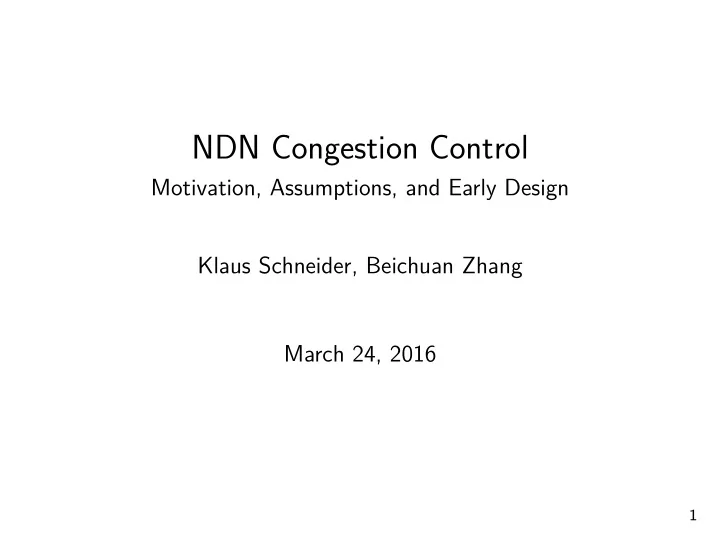

NDN Congestion Control Motivation, Assumptions, and Early Design Klaus Schneider, Beichuan Zhang March 24, 2016 1
Why NDN Congestion Control is Hard NDN Architecture makes Congestion Control hard: 1. Unknown Endpoints 2. Universal Caching 3. FIB Aggregation 4. Multipath Forwarding 5. Deployment as IP Overlay or Dual-Stack More specifically: • Hard to set a good timeout • Hard to set a good congestion window • Hard to signal congestion to the right consumer 2
Clarifying Assumptions Work in the literature disagrees about the assumptions. Critical for design implications! • Can we assume to know the link bandwidth ? • Can we identify flows? (probably not) • Naming conventions? Header fields? • Is per-flow fairness feasible (state overhead) or even desirable (fairness might work differently in NDN) ? • How much in-network state is feasible? • Are per-route labels scalable and practical? • Effect of caching strategies ? 3
Design Goals Ongoing work, intend to publish at ICN 2016. 1. First do no harm! – Work with reliable and unreliable traffic 2. Don’t rely on Timers • Avoid packet drops • Use explicit congestion notification • Use timeouts as backup with really high values (e.g. 2 seconds) 3. Exploit multipath routing • Make decisions hop-by-hop • Use NDN forwarding to ”forward around congestion” 4. Don’t use per-route labels 5. Consider overlay and dual stack scenario 6. Consider caching 4
Recommend
More recommend